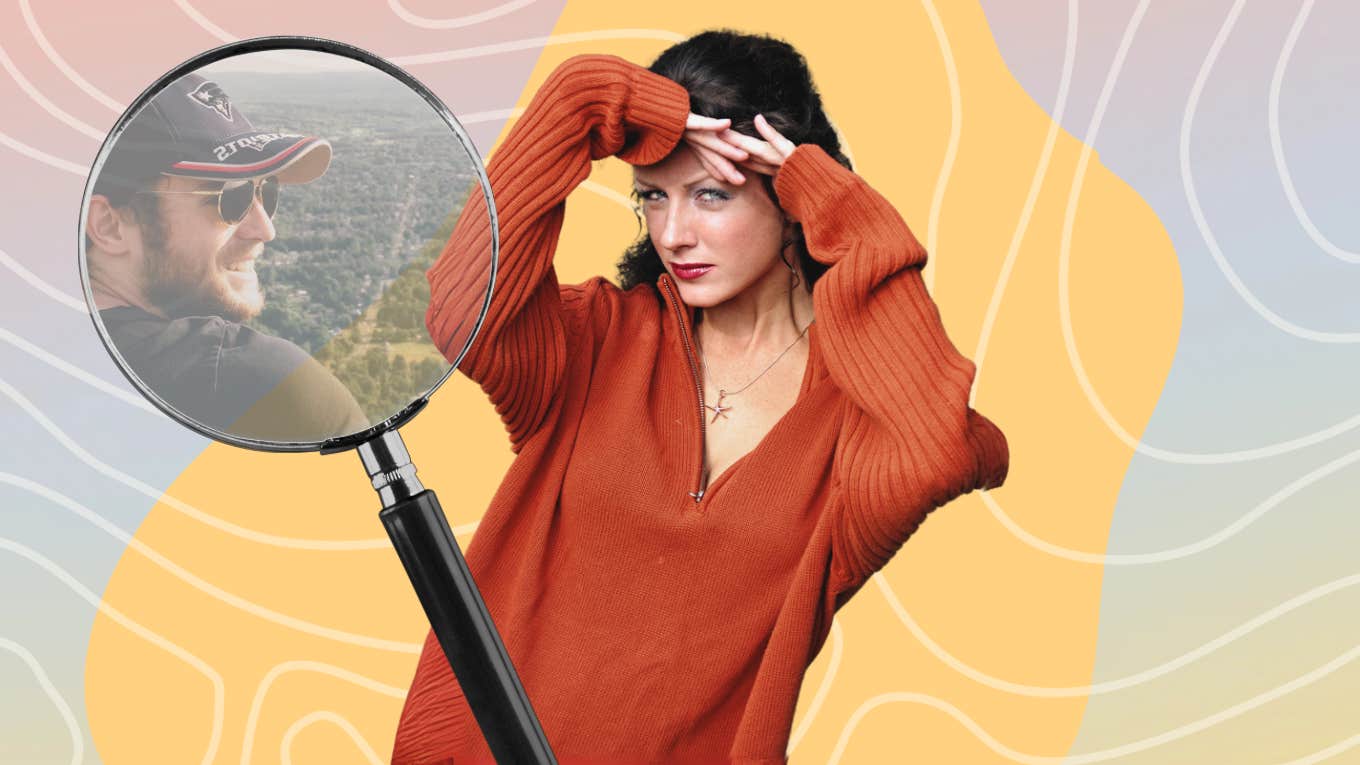5 Tiny Ways To Read Someone's Behavior, According To Experts
Tricks to confirm what your gut is telling you.
 happiest face =), GordonsLife | Canva
happiest face =), GordonsLife | Canva We often wonder what is the meaning behind people's actions especially when your gut is telling you something is wrong. Though we can't read their minds, we can watch for subtle signs in body movement and mannerisms. These indications can tip us off about what could be lurking in someone's motives.
Here are 5 tiny ways to read someone's behavior, according to YourTango experts:
1. Watch what their eyes are watching
One telltale clue to watch for is if someone you're speaking with is avoiding eye contact. That lets you know they might be lying or at least hiding something from you. A person's non-verbal communication is hard to fake and what can tip you off about a liar if you know the signs to look for.
— Ronnie Ann Ryan, Intuitive Coach and Past Life Reader
2. Listen to their body tell you their intention
A person's intentions and sentiments can be inferred a lot from their body language. Pay attention to nonverbal cues such as crossed arms (which could be interpreted as defensiveness), avoided eye contact (nervousness or dishonesty), direct eye contact (aggression or confidence), and posture (open posture can suggest openness and comfort, while closed posture can suggest the opposite).
— Sidhharrth S Kumaar, Astro Numerologist
3. Interpret their tone of voice
A person's speech pattern frequently reveals more about them than their actual words. A steady, quiet voice could be a sign of confidence, whereas speaking quickly and at a louder pitch could be a sign of anxiety or enthusiasm.
— Sidhharrth S Kumaar, Astro Numerologist
4. Notice how their body language contains a world of information
For example, someone who holds their body rigidly (arms folded, knees tightly together) is uncomfortable, perhaps fearful, of opening up to you. Jittering knees, feet, or hands, fidgeting, and inability to sit still spells anxiety. Constantly fixing their hair or adjusting their clothes spells self-consciousness and insecurity. The inability to look into your eyes may mean shyness, self-consciousness, or fear of what you may see in their eyes. We all "speak" through our body language. Pay careful attention to someone and their bodies will reveal what their words may not.
— Dr. Gloria Brame, therapist, author
5. Pay attention to the white of their eyes
Your eyes show less white when you're genuinely smiling; when more white shows, it's likely forced “When we’re genuinely happy and we have a genuine smile, the amount of white in the eyes that are visible reduces,” Terry Vaughn explained. “Wide eyes smiles are often reserved for fear, surprise, or rage — emotions that go hand in hand with some amount of adrenaline.”
Other ways to spot a genuine smile include a "sparkle” in a typically dull eye, creases near the edge of the eyes, and the timing of the corners of the mouth rising in alignment with the eyes.
It’s important to remember that everyone’s smile is different and unique, and the amount of white in someone’s eyes is not the only indicator you should use for detecting deception or “red flags”. However, trust your gut. If you notice their eyes in combination with other dubious behaviors, that might be enough to second guess.
— Zayda Slabbekoorn, writer of YourTango pop culture and human interest stories
 Photo: eldar nurkovic via Shutterstock
Photo: eldar nurkovic via Shutterstock
When we want to peer into the motives or intentions behind someone's actions, we can look for subtle signs in their behavior or actions. Of course, none of these tricks are absolute and guaranteed. We need to keep in mind these indications can be due to differences in cultural norms, neurodiversity, past trauma, or other influences on social behavior. Yet, when we have spent time with a person and know more about where they are coming from, these signs can be useful to gain insight for protecting ourselves.
Will Curtis is a writer and editor for YourTango. He's been featured on the Good Men Project and taught English abroad for ten years.
